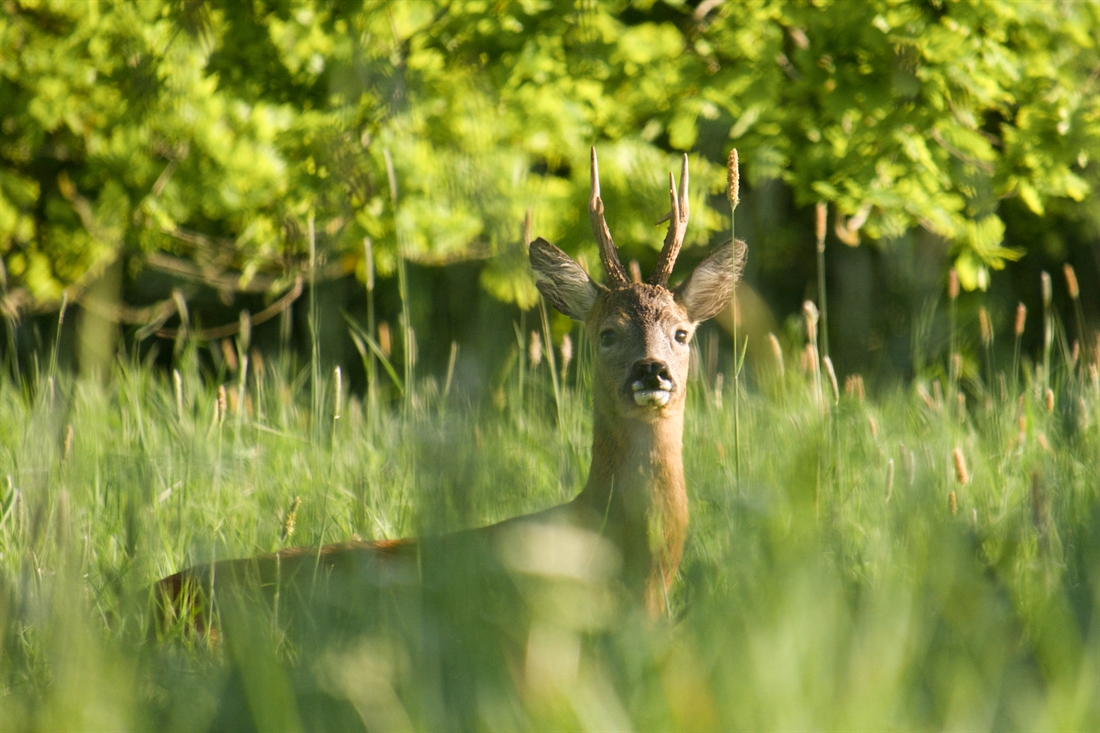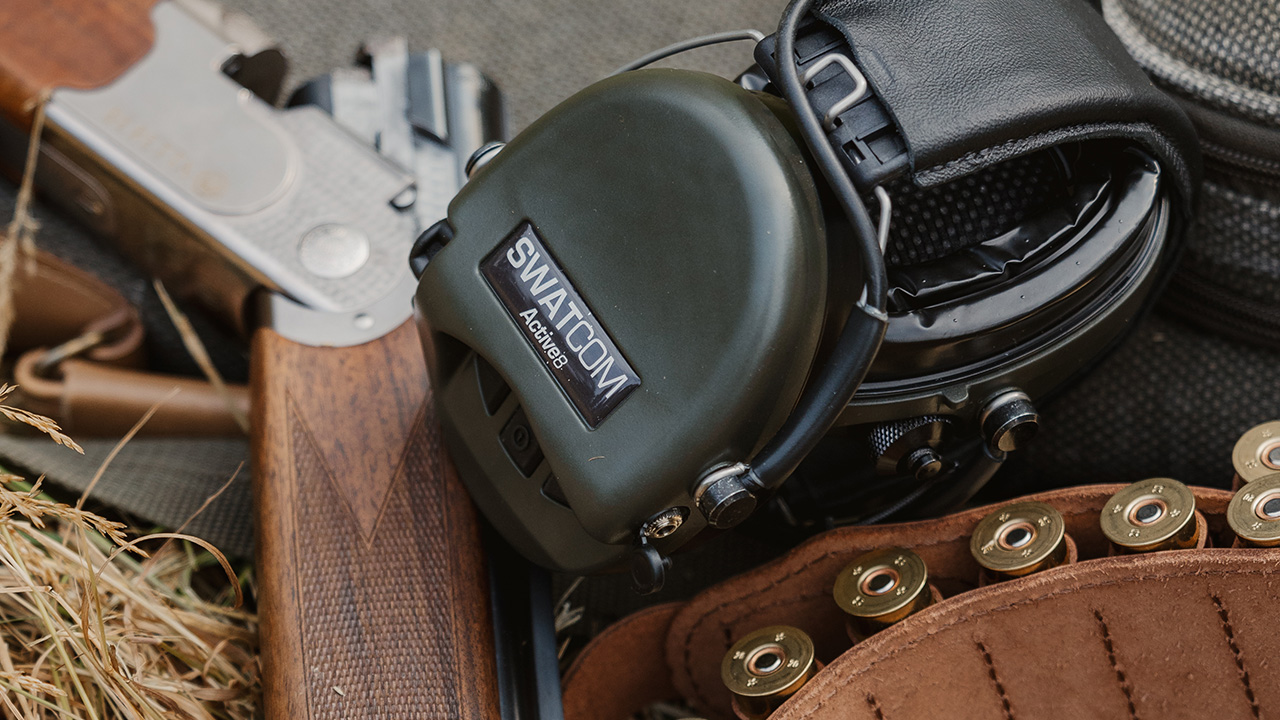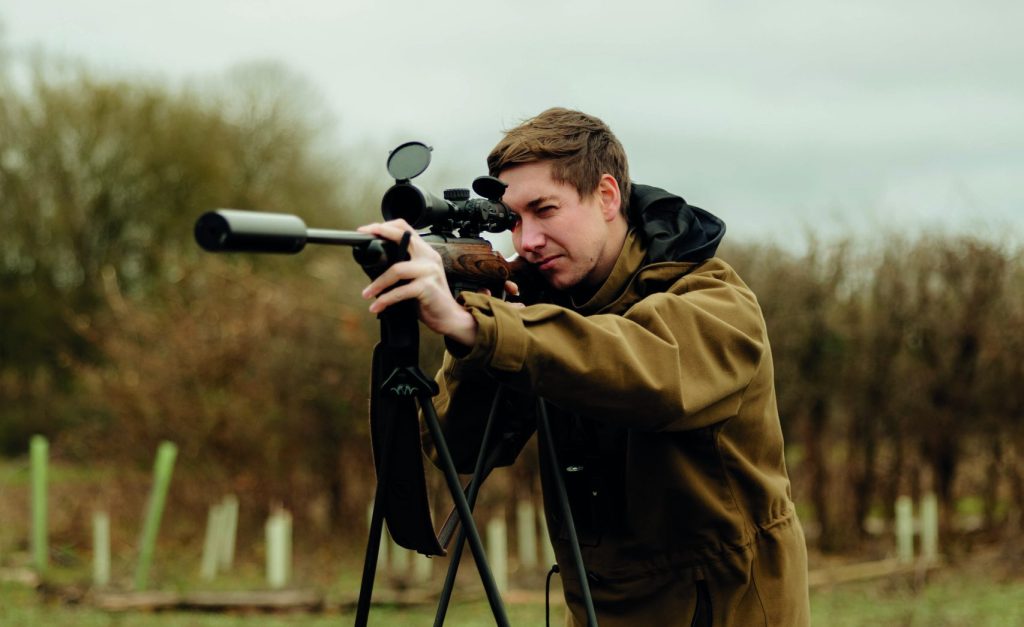A passion for deer
All my holidays were spent creeping through undergrowth observing and bettering my understanding of deer. Hugh is the chairman of the British Deer Society.

It was my eldest brother returning from a trip to improve his French with a Belgian godfather that first piqued my interest with deer. The tales he returned with made it abundantly clear that his ‘French exchange’ didn’t involve awkward introductions with forced new friends but trips into the forest, descriptions of rutting roe deer and strange peeping whistles that made bucks charge at you. As a 10-year- old younger brother, this was way more exciting than the gruesome week I had imagined him spending, particularly as his French language skill set was limited at best. I threw myself into my French studies the next year in the hope that the exchange offer would be extended, but it wasn’t to be.
Nonetheless it did little to diminish my growing fascination with these secretive creatures. I started to read books – Richard Prior’s bible, The Roe Deer, being the first of many. It was a year later that we moved from Suffolk to a farm in Norfolk and it was here that I had the opportunity to see these animals first hand – we were now living on the edge of the Thetford Forest and we had a flourishing roe deer population. My father had instilled in his four sons a love of all things countryside and an appreciation of the role that we as custodians of the land have to play in ensuring a balanced and diverse species population, but where his and my three brothers’ interests were in avian species, mine was definitely in Capreolus capreolus.
We had a Dutch uncle who was passionate about stalking roe and he essentially became my mentor, helping me understand how one manages a population. This was some 30 years ago and even then the UK was still relatively in the dark ages by comparison to our continental brethren in understanding and managing these deer. I was incredibly lucky to have someone like him to learn from.
From this point on, all of my holidays were spent creeping through undergrowth observing and bettering my understanding of deer. I was at school in Yorkshire and often when my mates were off on illicit under-age pub trips (in this county it appeared to be widely accepted that 15 year olds should of course be found in the pub of a Saturday afternoon), I would be creeping around a Forestry Commission block a few miles from school, a Kodak disc camera in hand, trying to snap blurred photos of deer flitting across narrow rides. This only served to feed my desire to better understand these animals and ultimately light the fire of what has now been a 30-year period of observing, stalking and photographing all of our UK deer species.
I love the quiet and undisturbed early starts of the day, knowing that most of the country is still in their bed as the woods and hedgerows start to come alive at the break of dawn. Much of my week is spent behind a desk doing my ‘day job’ and so being out in the field whenever I can acts as a wonderful antidote, although my wife still struggles to understand why the alarm clock needs to go off earlier at the weekend than the weekdays – “it’s not normal” an often heard refrain and one that I imagine many in the pursuit of deer hear from their loved ones!
I’ve been lucky enough now to stalk and observe all six of our UK deer species and over time my interest in them has evolved. As a 16-year-old I would get on the sleeper train to Fort William, my very old 7×64 Brno rifle with single post 6×42 scope stuffed into a golf bag for disguise, to stay with a friend and chase roe on the hill fringes. Just to see one let alone successfully bag one was a huge achievement. That was the first stage, then, if we grassed a deer, we had to carry it several miles home and quickly set about butchering it before the flies got to it.
Now I love just being out watching deer, and always learning about them. The desire to be behind the trigger has waned somewhat from my early days; now the real pleasure is in taking out my children, friends and those who I know will love and appreciate the opportunity to share a common love and interest.
As a long-serving member of the BDS, I’m now in the fortunate position of being a trustee director and it’s been an amazing opportunity to meet a wealth of people who have the same interests and desire to see our deer populations thrive within the wider countryside. It is exciting times within the BDS as we set about engaging not just with the stalking community but also with the wider rural and increasingly urban populations who are coming into contact with our deer species. We work to counteract the somewhat negative coverage they receive in the printed press and appreciate that whilst we undoubtedly need to manage our deer populations, we also need to appreciate the diversity they bring to our countryside.
It’s a real pleasure to see the growth in venison consumption in this country; no longer are people being served old red stag meat shot in the rut with its beyond gamey taste masked by a myriad of veg and juices. Now it’s correctly labelled on menus, people want to know where it has come from and what species it is. Businesses such as Hunter Gather Cook are running hugely popular courses at UK music festivals teaching people how to butcher a deer carcass, where to forage for herbs and other exotica (not of the mushroom type!) and importantly cook the results of their labour. People from all walks of life really are interested in the benefits of this meat source and its wider habitat and this gives me real hope that we have an amazing opportunity to educate the wider public in why we should look after and manage our deer population correctly.
I look forward to sharing with you in future issues my experiences past and present with deer as well as wider subject matters around them. We are so lucky in this country to have such a diverse population of deer and it falls on all of us who work amongst them to ensure that we hand down knowledge and teach the next generation how to continue to love and appreciate them.
Photographer HARRY GLADWIN
Related Articles
Get the latest news delivered direct to your door
Subscribe to Fieldsports Journal
Elevate your experience in the field with a subscription to Fieldsports Journal, the premium publication for passionate country sports enthusiasts. This bi-monthly journal delivers unparalleled coverage of game shooting, fishing and big game across the UK and beyond.
Each issue offers a stunning collection of in-depth features, expert opinions and world-class photography, all presented in a timeless yet contemporary design.
Save 10% on shop price when you subscribe, with a choice of packages that work for you. Choose from Print & Digital or Digital only with each journal delivered directly to your door or via the app every other month, plus access to past issues with the digital back issue library.








